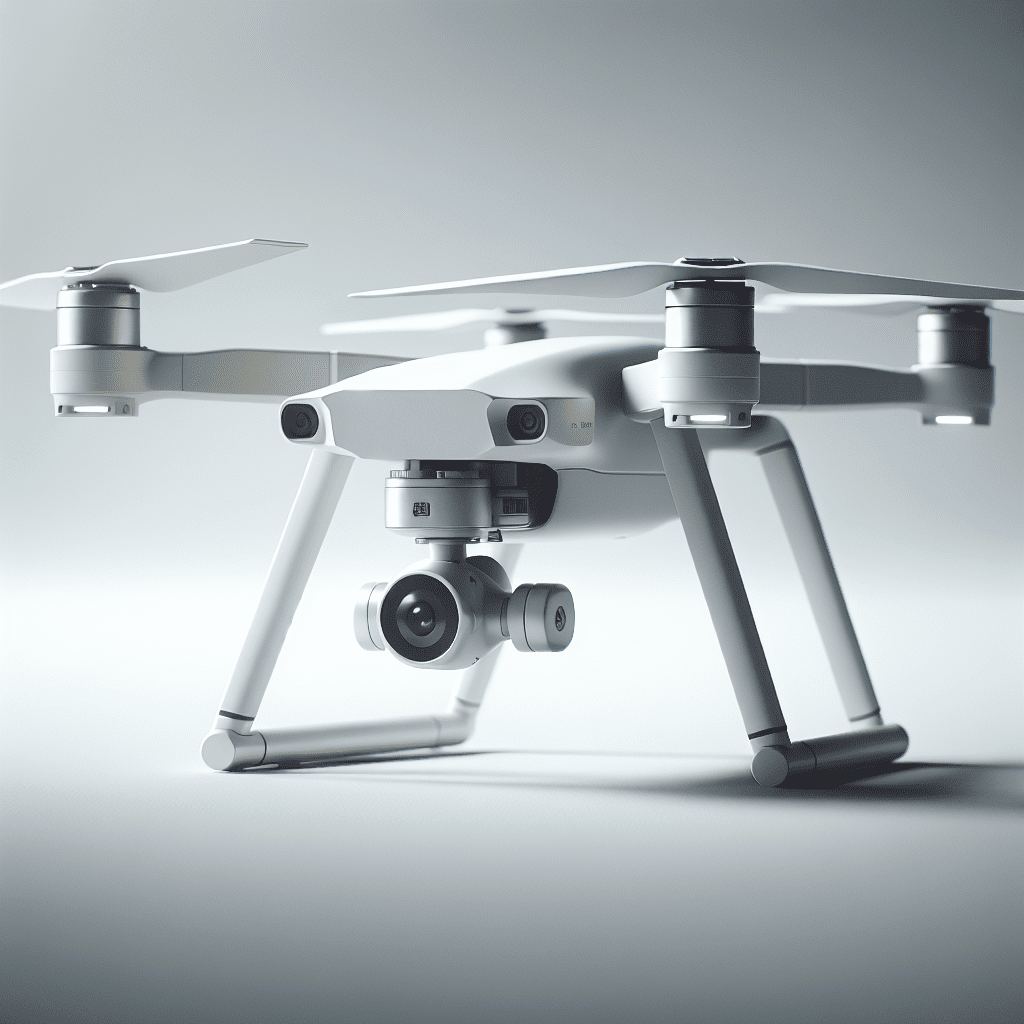Obstacle Avoidance Drones: Smart Tech for Safer Flights
In This Article
- Obstacle avoidance drones use LiDAR, ultrasonic, and visual sensors for real-time environmental awareness.
- AI and machine learning help drones predict and avoid upcoming threats autonomously.
- Dynamic mapping with SLAM enables drones to adapt instantly to new or complex surroundings.
- Models like DJI Mavic 3 and Skydio 2+ set benchmarks in obstacle avoidance technology.
- Real-world applications span disaster management, agriculture, infrastructure, and cinematography.
- Radar-based systems improve performance in low-light and adverse weather conditions.
- Combining autopilot logic with sensor data ensures flight accuracy and safety.
- Future developments will focus on smarter chips, swarm coordination, and longer flight times.
Why Obstacle Avoidance is Essential in Modern Drones
Understanding the Need for Safer Navigation
Obstacle avoidance drones have revolutionised what’s possible in both commercial and recreational aerial operations. These advanced systems are engineered to navigate complex spaces — from urban landscapes to dense forests — without human intervention. As demand grows across logistics, inspection, and entertainment sectors, the emphasis on safety, precision, and efficiency is stronger than ever.
Traditional drones relied heavily on GPS and a basic sense-and-respond approach limited to clear, open airspace. However, the reality of modern drone operations demands sophisticated navigation capabilities to safely interact with unpredictable environments. That’s where obstacle avoidance comes into play. With state-of-the-art sensors and intelligent algorithms, these drones detect, interpret, and respond to physical constraints mid-flight, optimising performance and preventing costly accidents.

Core Technologies Behind Dynamic Obstacle Avoidance
From LiDAR to Ultrasonics: The Sensor Suite
The backbone of obstacle avoidance drones lies in their sensory components. LiDAR (Light Detection and Ranging) systems help in constructing high-resolution, three-dimensional maps of the surroundings. These laser-based sensors allow drones to measure distances with remarkable accuracy, making them ideal for real-time navigation in rapidly changing environments.
Ultrasonic sensors, akin to echolocation used by bats, are particularly effective at close-range obstacle detection. Often positioned around the drone’s periphery, they emit high-frequency sound waves and calculate the time it takes for the echo to return. This simple yet effective method offers an extra layer of collision resistance, especially useful in low-visibility conditions.
Infrared (IR) sensors and stereo vision cameras are also integral to obstacle avoidance systems. While IR provides thermal data for night flying or smoky scenarios, stereo vision replicates human binocular vision, enabling depth perception. By correlating images from two perspectives, drones can discern spatial relationships between objects, thus refining their path in motion.
“Incorporating multi-sensor fusion in obstacle avoidance drones has substantially improved their reliability and mission success rate across various industries.”
The Role of AI and Machine Learning in Collision Prevention
Beyond hardware, artificial intelligence (AI) and machine learning (ML) play a pivotal role in enhancing obstacle avoidance drones. These technologies enable pattern recognition and predictive modelling, allowing drones to learn from previous flights. The more a drone flies, the more it understands patterns in movement, obstacle types, and reaction strategies.
Real-time data processing, fused with AI models, leads to the generation of predictive avoidance algorithms. These algorithms do not just respond to danger; they anticipate it. For example, if a bird comes within a specific proximity, a drone’s AI may predict its trajectory and adjust its flight path long before a collision risk escalates.
Moreover, reinforcement learning allows drones to refine responses through simulated experiences, enhancing decision-making under unpredictable circumstances. This adaptive behaviour is crucial in industries where drones operate near humans, such as crowd surveillance or event cinematography. With AI at the helm, safety and autonomy increase dramatically.
Vision-Based vs. Radar Systems: Pros and Cons
Obstacle avoidance drones generally rely on two main detection philosophies: vision-based and radar-based systems. Each has strengths and applications in varying environments.
Vision-based systems, often comprising stereo or monocular cameras, are lightweight and cost-effective. They excel in controlled lighting, such as indoor inspections or daylight operations. These systems capture detailed textures and shapes, aiding recognition tasks like identifying power lines during infrastructure assessments.
However, their performance diminishes in low-light or harsh weather conditions. In contrast, radar-based systems transmit radio waves to detect and map objects even through fog, rain, or dust. Although bulkier and more expensive, radar ensures dependable operation in adverse environments.
While most progressive drones employ a hybrid of both, developers must assess each mission parameter to select the ideal visual navigation system. Applying the right detection method improves battery performance, response speed, and mission integrity.
How Real-Time Mapping Enhances Autonomous Flight
Dynamic obstacle avoidance hinges on up-to-the-second spatial awareness. This is where real-time mapping comes into play. Through SLAM (Simultaneous Localisation and Mapping) technology, drones can construct their environment map as they move and simultaneously determine their position within it.
SLAM integrates data from various sensors to build dynamic maps, adapting in response to environmental changes like moving people, cars, or animals. As a result, obstacle avoidance drones can navigate spaces that static map-dependent drones cannot, such as unfamiliar indoor facilities or disaster zones affected by structural shifts.
The map-building process also enables drones to remember previously visited areas, optimising route planning and battery utilisation. Ultimately, these real-time analytics support longer missions with fewer manual corrections, maximising operational efficiency.
Top Drone Models with Advanced Obstacle Detection
Several drone manufacturers have pushed hardware innovation to prioritise obstacle avoidance capabilities. DJI’s Mavic 3 features omnidirectional vision sensors and APAS 5.0 (Advanced Pilot Assistance System), allowing for seamless navigation in dense environments. Similarly, the Skydio 2+ relies almost exclusively on advanced AI and 360° 4K vision sensors to fly autonomously with minimal intervention.
Parrot Anafi AI offers 4G remote connectivity and combines GPS with stereoscopic cameras to deliver accurate obstacle mapping in real time. Autel Robotics’ EVO II Pro uses radar, visual, and ultrasonic sensors interlinked via machine-learning models, making it ideal for inspection and search-and-rescue missions.
Choosing among these top-tier models often depends on use case, payload capacity, and autonomy levels. However, for most commercial applications, these systems set the industry standard for dynamic obstacle avoidance excellence. Learn more about Advanced Drone Navigation & Safety
Scenarios Where Dynamic Avoidance Saves Missions
The true value of obstacle avoidance drones crystallises in mission-critical scenarios. Consider a disaster relief operation in an earthquake-hit cityscape. Clear visibility is often compromised, and debris constantly shifts. Here, drones equipped with SLAM and responsive sensory arrays can deliver medical supplies or map dangerous zones without risking human safety.
In agriculture, drones autonomously navigating through tree canopies, irrigation systems, and uneven fields maximise data collection while minimising risk. Without automated avoidance, such precision would demand constant pilot interference, reducing scalability.
Similarly, real-estate property scans in high-rise areas, cinematic sequences through forested terrain, and bridge inspections all underline the unparalleled advantage of dynamic adaptation. Simply put, intelligent avoidance turns mission possibility into mission success. Read a related article
Integration of Autopilot Systems for Safer Routes
Autopilot systems serve as the central control unit of obstacle avoidance drones, translating sensor data and AI feedback into coherent flight paths. By integrating GPS data, mapping layers, and dynamic sensory inputs, autopilots can evaluate multi-dimensional risks in real time.
These advanced flight controllers continually fine-tune heading, altitude, and velocity across multiple vector readings. If a new obstacle appears mid-flight, the autopilot instantly recalibrates the trajectory without interrupting the mission plan.
Additionally, event-based triggers, such as no-fly zones or battery emergencies, can activate predefined avoidance behaviours, including return-to-home or altitude adjustments. Such programmable logic ensures that drones not only avoid obstacles but do so intelligently, conserving energy and time.
Challenges in Complex and Cluttered Environments
Despite advancements, drone operators face inherent challenges in unpredictable settings. Cluttered warehouses, powerline corridors, or thick urban environments rich in GPS interference pose unique risks. Reflections, dynamic changes, and non-geometric objects like smoke or fabric can confuse vision-based systems.
Further, limited computational power onboard restricts the level of real-time interpretation possible. Even milliseconds delay in processing can alter a collision outcome. Regulatory implications also extend to obstacle avoidance systems, which must comply with airspace and safety mandates depending on the country of operation.
Solving these issues requires high-performance processors, software optimisation, and sometimes offloading computations to edge-cloud hybrids. As stakeholders demand safer, faster flights, these systems must evolve to match increasingly complex usage scenarios. What Is Obstacle Avoidance in Drones?
Future Trends: Smarter Sensors, Safer Drones
The future of obstacle avoidance drones lies in smarter, more context-aware systems. Expect to see miniaturised LiDAR components, neuromorphic AI chips, and swarm navigation protocols that allow multiple drones to communicate and collaboratively avoid danger.
Moreover, real-time environment-sharing among fleets will revolutionise drone traffic management. If one drone detects a hindrance, it can instantly relay this data to others within proximity, enabling pre-emptive rerouting even before approaching a hazard.
Battery design, too, will play a role. Obstacle detection and avoidance consume significant power. Future drones may feature energy-efficient processors and solar-supplemented charging skins that extend mission time while maintaining safety analytics. Such technologies will mark a leap towards fully autonomous, intelligent aerial robots that can responsibly coexist with human spaces.
Conclusion: Smarter Drones for a Safer Sky
[CONCLUSION_CONTENT]
Obstacle avoidance drones are no longer a futuristic concept; they are a necessary evolution in the modern aerial ecosystem. With collision-free navigation, enhanced autonomy, and increasing adaptability, these flying systems signify a paradigm shift across industries.
All signs point to a future where drones blend seamlessly into everyday tasks — from parcel delivery to construction planning — without posing operational or environmental hazards. Thanks to a fusion of world-class sensors, predictive intelligence, and robust system design, the sky is no longer the limit but the beginning.
Great guide on dynamic-obstacle-avoidance-strategies-for-modern-drones – Community Feedback
How do modern drones avoid obstacles in flight?
Modern drones use a combination of sensors like cameras, LiDAR, radar, and ultrasonic detectors, paired with AI algorithms, to detect hazards and autonomously adjust their flight path.
What are dynamic obstacle avoidance strategies?
Dynamic obstacle avoidance strategies enable drones to adapt and change their course in real-time in response to moving and unexpected obstacles, ensuring safer missions.
Which technologies power obstacle avoidance in drones?
Obstacle avoidance is powered by advanced sensors (cameras, LiDAR, radar), vision-based algorithms, and increasingly, AI and machine learning for environment mapping and decision-making.

